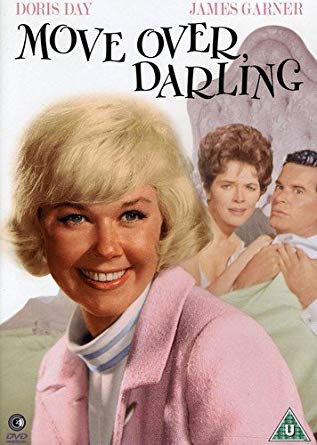 The two biggest box office attractions of the late 1950s and early 1960s had many similarities and two huge differences.
The two biggest box office attractions of the late 1950s and early 1960s had many similarities and two huge differences.
Both were blondes.
Both were very attractive.
Both changed their names when they got into show business.
Both worked primarily in hugely successful comedies, but were also effective in straight dramas.
The differences – one embraced an openly sexual persona, the other played the perpetual uptight virgin. One self-destructed by 1962, the other was with us until 2019.
We’re talking, of course, about Marilyn Monroe and Doris Day.

Doris Day was born Doris Mary Kappelhoff. She wanted to be a dancer, but a car accident in 1937 ended that dream, so she switched to becoming a singer.
Her success in that career, combined with her good looks, landed her a film contract at Warner Brothers where she was put to work in low-budget comedies and musicals, often teamed with comic Jack Carson. The films made money and she moved up the chain, finally breaking through to A-pictures in the early 1950s.
 As most of us know, Marilyn was born Norma Jean Mortenson. After a very dysfunctional childhood that saw her shuttled in and out of foster homes and orphanages while her unmarried mother was in and out of mental institutions, Monroe got into the movies by way of modeling. She started out with bit parts in movies like All About Eve and the Marx Brothers’ final film, Love Happy. Larger parts followed until she, too, made the transition to starring roles.
As most of us know, Marilyn was born Norma Jean Mortenson. After a very dysfunctional childhood that saw her shuttled in and out of foster homes and orphanages while her unmarried mother was in and out of mental institutions, Monroe got into the movies by way of modeling. She started out with bit parts in movies like All About Eve and the Marx Brothers’ final film, Love Happy. Larger parts followed until she, too, made the transition to starring roles.
While initially untrained in acting, both Day and Monroe were natural talents who competed for the title of #1 Box Office Attraction as the 1950s progressed. But Monroe was stuck endlessly repeating variations of the “dumb blonde” character, while Day most often played smart career women or dedicated, spunky housewives.
Yet behind the cameras, it was Monroe who was more of a female business pioneer. Unsatisfied with both the roles and the salary her studio was offering her, she started her own production company in 1955 and stunned critics with her sensitive performance in Bus Stop. She won pay raises and more control over what roles she would play. But her personal problems eventually overcame Marilyn and she died of a drug overdose in 1962.
 Ironically, the film Monroe was working on when she died, Something’s Got to Give, continued after her death with a new title, Move Over Darling, and a new star in her role – Doris Day!
Ironically, the film Monroe was working on when she died, Something’s Got to Give, continued after her death with a new title, Move Over Darling, and a new star in her role – Doris Day!
It is worth considering that these two women were indisputably the biggest female movie stars of that era. Yet one was portrayed as the dangerous bad girl and the other perceived as the prudish good girl. (Ironically, Day’s real love life was almost the polar opposite of her on-screen image. At one point, she was alleged to be having relations with at least four men on a regular basis and was also involved with husbands and boyfriends who physically abused her.)
 While Marilyn self-destructed, Doris was a survivor. When her film career petered out, Day transitioned to television and starred in a long-running sitcom that left her financially independent. While she retired from on-camera work, she continued to record, releasing her most recent album (her 29th) in 2011.
While Marilyn self-destructed, Doris was a survivor. When her film career petered out, Day transitioned to television and starred in a long-running sitcom that left her financially independent. While she retired from on-camera work, she continued to record, releasing her most recent album (her 29th) in 2011.
Both women represent a certain segment of America as we transitioned from the end of World War II into “the Swinging Sixties” and their film work should continue to entertain movie fans for many generations to come.